There is more than one way to expand your flock of chickens. You can buy more chickens or you can breed the chickens you currently have. The thought of breeding your own chickens is very exciting and lots of chicken keepers choose to do this. If you are wanting to show chickens then you will definitely be breeding your own show chickens. It can be great fun and a process that your whole family will enjoy. Who wouldn’t want cute chicks pottering about the garden?
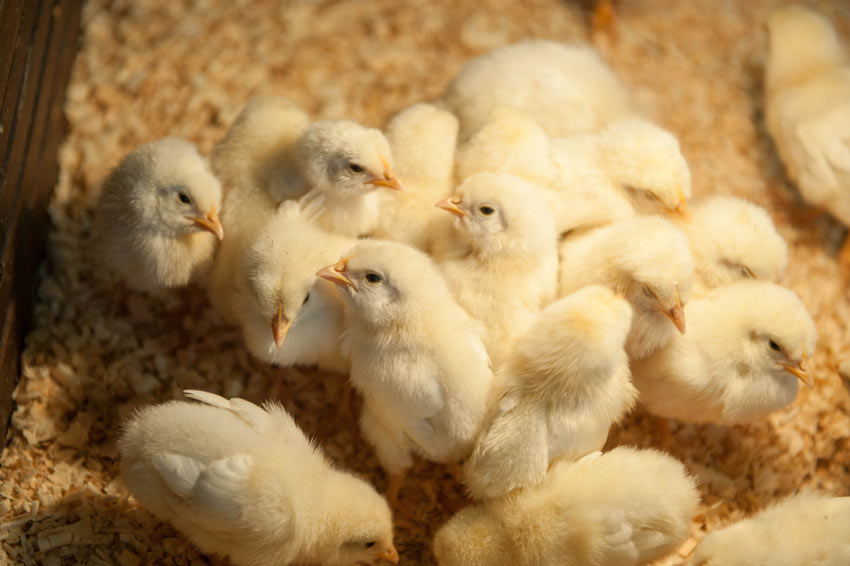
A group of young chicks under a warm light
Setting Up A Breeding Flock
If you don’t already have a cock then you will need to source one from a reputable breeder. If you are breeding for showing purposes then you should go to a breeder who has a good reputation for providing good parent stock. You should set up your breeding flock in spring time.
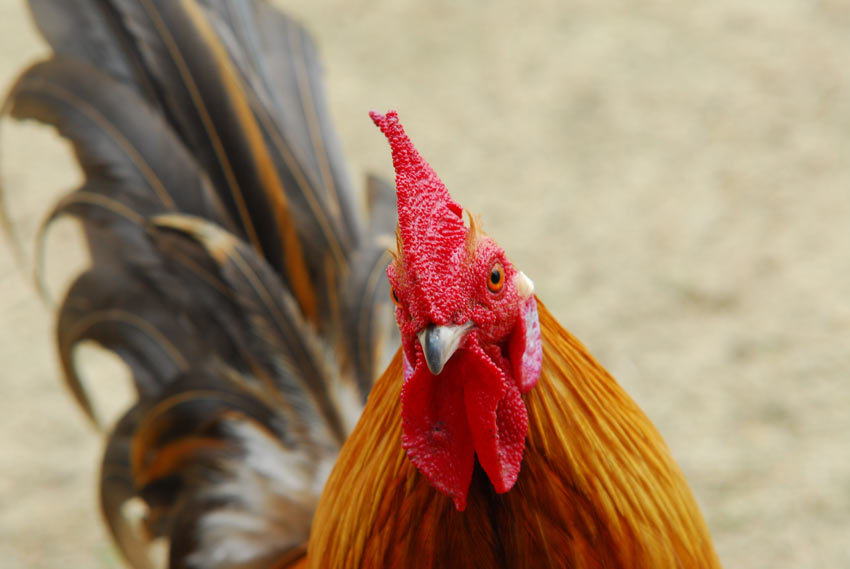
A beautiful Red Junglefowl cockerel
You will then need to either build or purchase a breeding pen. This will be a separate area that your breeding flock will live. They should have their own coop and run. A breeding flock consists of one cock and several (6-10) hens. You should ensure that all chickens in your breeding flock are healthy and without any infections or parasites.
Mating
A cock will mate with several birds a day. The mating process can take its toll on your hens as it involves to make plucking her feathers out and sometimes causing wounds. It can be sensible to fit poultry saddles to your hens to prevent any damage and protect the hens.
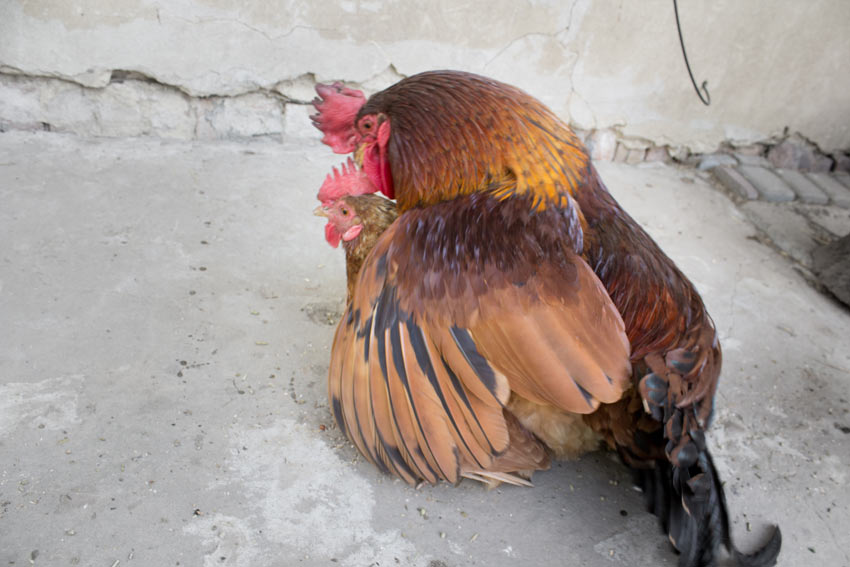
A cockerel mating with a hen
When mating occurs your cock will display courting behaviours, although not all cocks are big romantics, and some may not display any courting behaviour. Courting behaviour usually consists of splaying his wings out and dragging them on the floor whilst side stepping. He may also pick things up and drop them to get the hens attention. Once the cock has the hens attention the hen will usually squat and let the cock mount her. He will climb on top and hold on to her neck feathers and ‘tread’ to steady himself. This is known as ‘treading’. A cocks reproductive sexual organ (a papilla) is located just inside his vent. The two vents will touch which is known as a ‘cloacal kiss’. The whole mating process is over very quickly and will take about a minute start to finish.
Fertilised Eggs
You will need to collect the eggs regularly, even if you plan on having one of your broody hens hatch the eggs. This is so you can choose the best eggs for her to brood. It is also said that storing fertilised eggs for 24 hours before they are incubated ensures successful hatching. Fertilised eggs will not turn into embryos unless they are correctly incubated.
When you are collecting the eggs you should have clean hands so you don’t pass any pathogens onto the eggs through the porous shell. You need to be extra careful to not break the eggs. It is also very important to keep the nest free of any droppings or mud to keep the eggs clean. If you do this you won’t have to worry about cleaning any eggs prior to incubation. If you do have to clean the eggs then you should use an egg sanitiser and warm water. When choosing eggs to store and hatch choose eggs that are a regular shape and have no cracks.
When you store fertilised eggs you should store them the pointy end down in an egg box. They can be stored up to 7 days before being incubated. You should store them at 13°C in a place with high humidity. You will also need to turn the eggs to ensure the inner membrane doesn’t get stuck to the outer shell. You can simply place a thick book or an empty egg box under one end of the egg box and change ends once in the morning and then again in the evening to tilt the eggs the other way.
Hatching The Eggs
You have two options when it comes to hatching your fertilised eggs. You can either use an incubator or a broody hen. An incubator is more reliable but require more of your attention. For information on how to hatch and incubate eggs yourself click here.
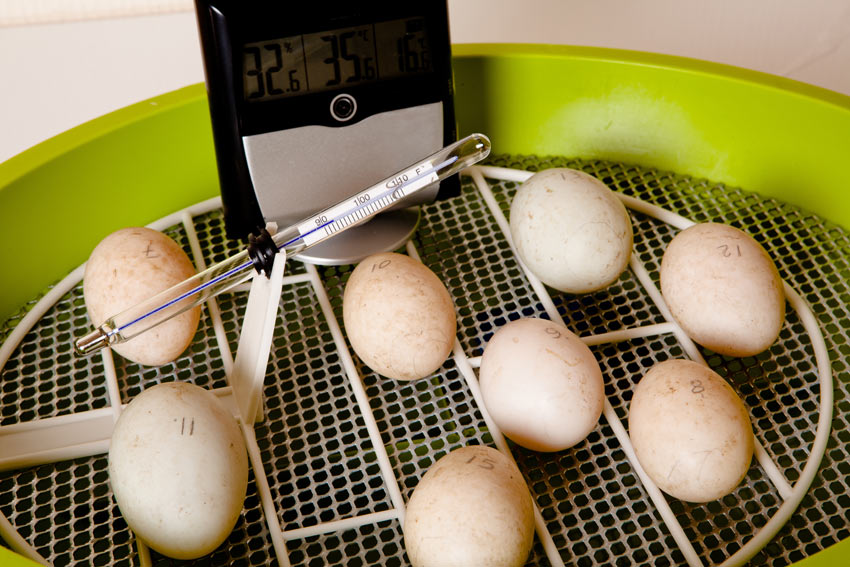
A clutch of fertalised chicken eggs in an incubator
You should put your broody hen in her own broody box. A rabbit hutch can be a good option as it provides a dark quiet area to nest and a separate area for food and water. A broody box will need to be humid. To achieve this you can cut some turf to fit the nesting box area. Turn it earth side up and make a slight hollow in it to make sure the eggs stay put. Cover the turf with fresh bedding. You should move your chosen broody to this broody box and place some fake eggs under her and wait a day for her to get used to her new nest and to ensure that she is going to incubate your eggs to completion.
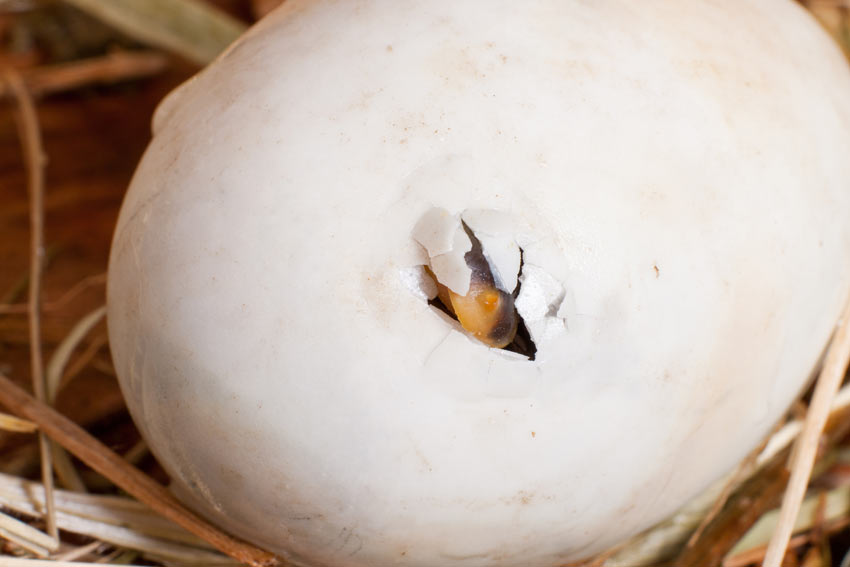
A chick hatching, breaking through the shell with its beak
You should introduce your fertilised clutch of eggs at night. A large hen can incubate up to 12 eggs, but smaller bantam breeds can only manage around 6 eggs. You should make sure that she fully covers all of the eggs without having to stretch. It will take on average 21 days for the eggs to hatch. This time will vary from breed to breed.
Your broody hen should manage the whole process by herself from. She will aid the hatching process and will give up on any eggs that aren’t going to hatch. When she has left the nest with her newly hatched chicks you should remove any remaining eggs and dispose of them.
Rearing The Chicks
You should keep your hen and chicks separate from the flock until the chicks are 6 weeks old. You should also keep them inside for a week as it will be too cold and probably wet outside. You should provide chick crumbs and water in a specific chick waterer. After a week the chicks can go outside onto short grass. You should keep them in a secure run that is covered over to stop any predators from getting to the chicks. Your mother hen will teach them everything they need to know.
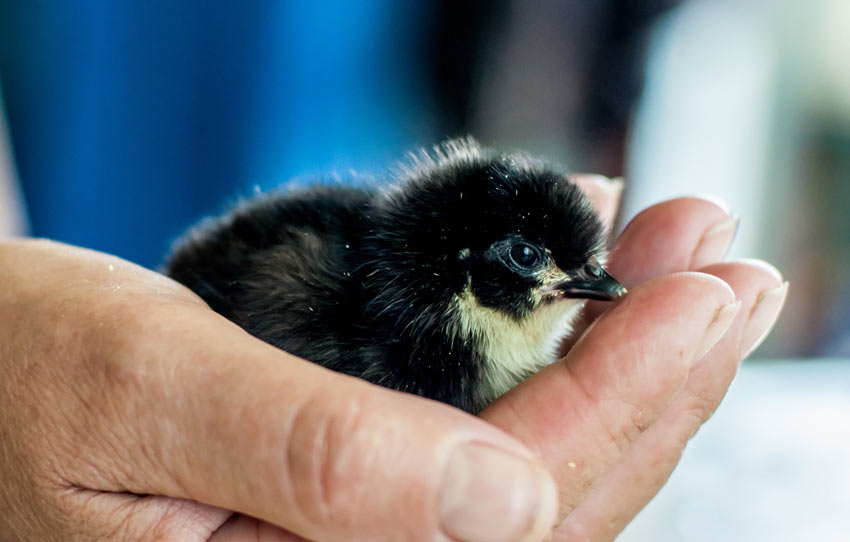
A healthy young chick sitting in the palm of its owner's hand
At 6 weeks you can introduce them to the flock. Their mother should protect them from any bullying but keep an eye on them and make sure they are all getting on. If they are in any danger you should remove them and wait for them to be a bit bigger before reintroducing them.




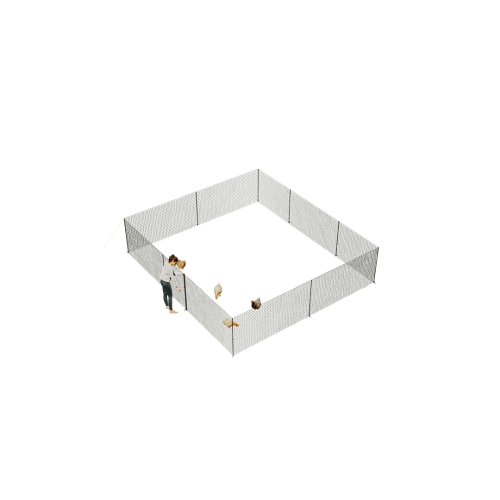
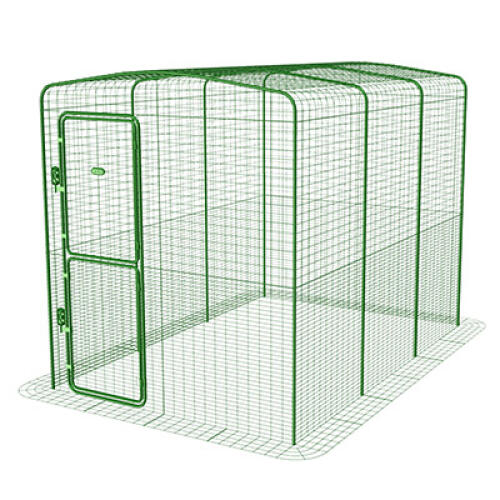
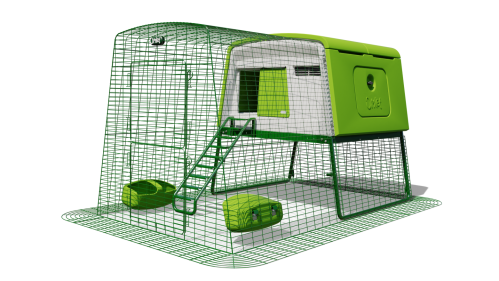
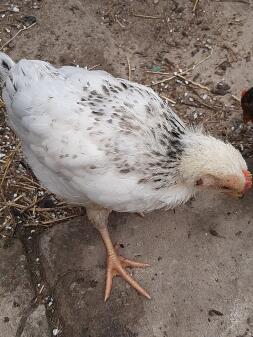
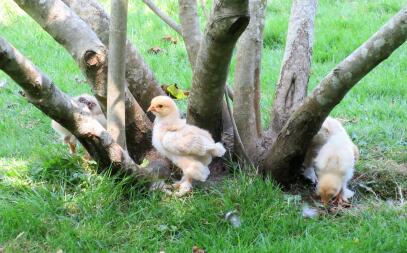
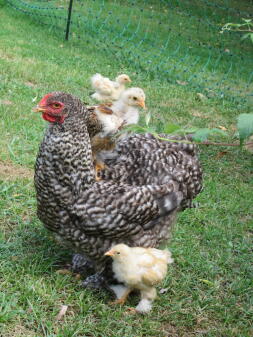
Comments
Thuocgavip, 23 August 2019
Inbreeding is where the chickens being mated are related, such as a brother and a sister. Inbreeding can cause severe problems for the chicks, including a weak immune system. Don't inbreed as it will be unfair on the chick; it will have a higher chance of dying. See more: thuoc ga da
Denis, 7 May 2018
OMLETE. THANKS FOR EXCELLENT INFO ON RAISING CHICKENS. MY FOLKS HAVE HAD BACKYARD CHICKENS ON AND OFF FOR A LONG TIME . THATS HOW I LEARNT THE BASICS OF LOOKING AFTER THESE BIRDS. NOW THAT ILL HAVE THE CHANCE TO RAISE MY OWN I WANTED TO FIND OUT INTELLIGENTLY WHY THE BIRDS HAVE TO BE CARED FOR IN A CERTAIN WAY......AND HOW TO DO THAT BEST. YOU HAVE BEEN A GREAT HELP.
Chickens, 23 January 2018
This is amazing! I'm planning on breeding my chickens once they get older! Thanks for the info!